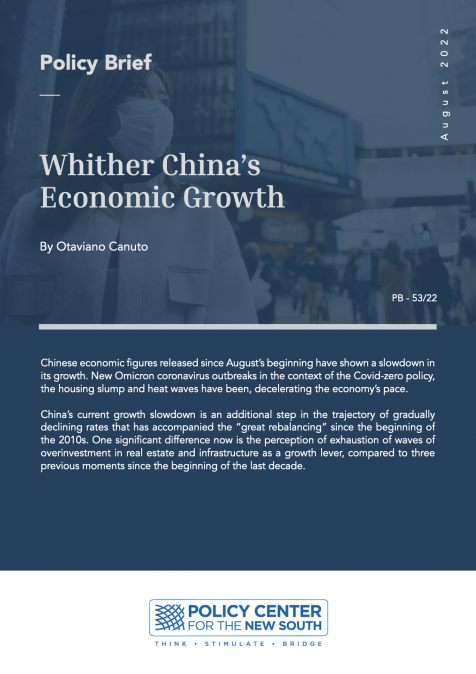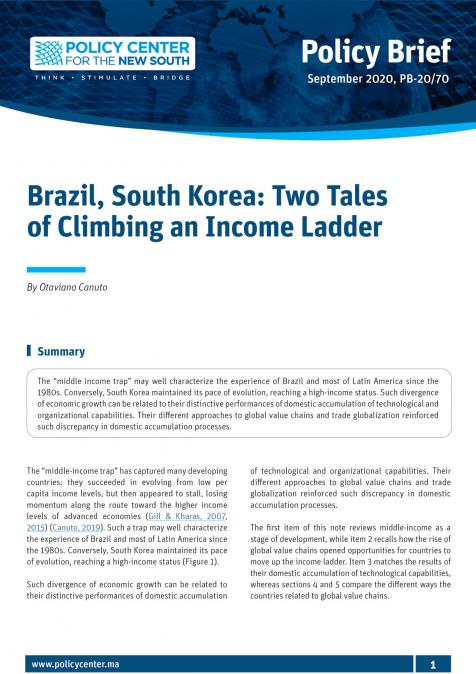Publications /
Opinion
We are entering an economic cycle with a changing nature of consumption focusing on necessities. It seems like the times of luxury, entertainment and vacations are over, at least until the discovery of a vaccine for COVID-19. The unfolding of the health crisis that we have been witnessing in Italy, Spain and other advanced economies will not be as severe as the economic crisis that the Coronavirus will unleash.
The International Monetary Fund has been warning us that the financial crisis could be worse than in 2008. We have already started to see the impact: in the United States more than 15% of the working population has filed for unemployment benefits, and more than 22 million people have already suffered the consequences of the Coronavirus pandemic. With each passing day, over 700,000 Americans are losing their jobs despite the injection of 4 trillion dollars in the economy.
What About SMEs in South East Asia, Africa and Latin America?
If this is happening in the world’s strongest economy, think for a moment what could happen to developing countries in South East Asia, Africa and Latin America. People put into furlough for a couple of weeks or being laid off is a direct consequence of struggling companies, especially for small and medium enterprises (SMEs) representing more than 90% of companies around the world. Large companies can always call for a direct line of credit in one of their associated banks or in some cases, receive bailouts from the government, but what happens to the SMEs who are also struggling? Is it easy for them to access loans? Would they be able to sustain their payroll for a couple of months? Are they going to receive help from the government? Would they be able to stay in business when the demand falls? Is it the same to help an SME in Europe than the rest of the world? How can we help SMEs?
The current situation for SMEs in Latin America, Africa and South East Asia is dire. In countries that are in lockdown, the sales have fallen from 50-100% in most sectors, and most enterprises will not survive for more than 2 months if the economy is not reactivated. However, this is the data from the enterprises that have business registration, but unfortunately this only represents 40% of the SMEs, because the rest are part of the informal economy.
More than 2 billion people around the world are part of the informal economy. In Africa, this number reaches 85% and in the Americas 40%, which indicates that most of the data that is being used by governments to issue policies to protect SMEs are leaving out most of the working population which could be catastrophic if we do not change course today.
The Case of Colombia
Let us take the example of Colombia, the South American country that depends on oil exports and foreign direct investment. The National Planning Department estimates that three of four enterprises in the country are part of the informal sector, as they do not see the benefits of formalizing (which affects the employment contracts, employment conditions and their contributions to the pension system). From the data of formal enterprises, which are only one in four companies, we can infer the difficulty of their conditions: 98% of the enterprises are micro enterprises with sales of less than $250 USD per month where half of them generate only one job.
These are 1,5 million companies, only representing 25% of the firms in Colombia, with more accurate numbers reaching 6 million companies if we were to take into account the SMEs in the informal sector, all trying to stay afloat from what they can sell on a daily basis. The people working in the informal sector are therefore not part of the subsidies distributed by the government, and are not receiving food or assistance to get through these uncertain times, which would explain why civil unrest, fueled by the need to survive, is breaking out in the country. Everyone talks about reactivating the economy, but how will the economy be during the next months, where social distancing is the norm?
Colombia is set to complete a one-month full quarantine to prepare the health system, increase the number of coronavirus tests and determine how to open the economy. The government has set more than $3B USD in lines of credit to help SMEs, offering a guarantee of 80% so banks could extend loans.
On paper this is a good measure, however, in practice, the decision lacks 3 elements that are essential to make this a successful policy:
1) Understand that more than 80% of formal enterprises in Colombia lack access to the financial system;
2) Banks have not setup digital application systems to streamline the process and decide in days instead of weeks; and
3) The government lacks an information system to track what company has applied, what answer has been received and how the loan money is being used.
The Present and Future are Digital
That is why we need a strong digital infrastructure that is able to understand the real conditions and offer the same opportunities to any SME, whether it is formal or informal in nature. There are some governments around the world such as Switzerland and Canada that understand these considerations and have implemented websites to reduce the bureaucratic obstacles, acting swiftly to avoid the scenario where countless enterprises would go bankrupt to demonstrate the need.
Imagine a scenario where each government and city uses a unique website on which companies can apply for loans. Imagine if the system put in place can automatically decide to which bank or Fintech it should direct each application. Imagine that it could take less than 24 hours for a company to obtain an answer and an alternative in the case of a negative response, where every institution could compete to offer a detal. Imagine that the government can know exactly who is requesting and receiving the loan and how companies are spending the money. This digital system is achievable today as we have the necessary technology, but we are yet to see its implementation due to lack of political will and decision making.
We can also look at the past for ideas, such as the Cybersin project, conceived in the year 1971 by the Chilean president Salvador Allende, which was then destroyed by Pinochet after the coup. This project was created with the help of Stafford Beer, a cybernetics expert from the UK, who tried to implement a system where the government could track in real time what each company was doing and what their requirements were, therefore giving it access to information in real time needed for better public policy making.
The system to help SMEs needs to be adapted to include every type of small and medium enterprise, offer full transparency, diminish the corruption which is present in large proportion in many developing countries, and provide an environment where SMEs can compete with large companies with a greater benefit to society.
If we decide to keep the same index score mechanisms that favor large companies, ignore the pledge from small business owners, forget about the informal economy (the silent majority), and keep business as usual, large companies will increase the market share and the economic destruction will be of biblical proportions. While the government sits down to make decisions with incomplete data, business owners are fighting to keep their businesses afloat and survive the tsunami of destruction that Coronavirus will leave in the world.
Sources:
https://blogs.imf.org/2020/04/14/covid-19-crisis-poses-threat-to-financial-stability/
https://www.ilo.org/global/about-the-ilo/newsroom/news/WCMS_627189/lang--en/index.htm
https://colaboracion.dnp.gov.co/CDT/Conpes/Econ%C3%B3micos/3956.pdf
https://fintechnews.ch/p2plending/swiss-smes-can-apply-for-0-interest-five-year-credit/33941/
https://radioambulante.org/extras/cybersyn-en-fotos
The author is an alumnus of the 2019 Atlantic Dialogues Emerging Leaders program and CEO of NaaS.





